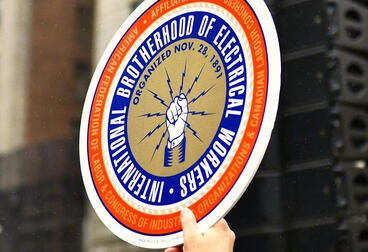Within the next 13 to 15 years, thanks to Governor Andrew Cuomo, trade unionists and environmentalists in New York State will be in the nation’s vanguard to renewable energy provisions for millions of New Yorkers. Through hydropower, hydrokinetic and wind tower turbines driven by rivers, waterå_falls and a South Fork Offshore Wind Farm, New Yorkers will experience a reduction of energy costs coinciding with a reduction of greenhouse gas emissions whether or not the current White House administration accepts man’s negative impact on climate change.
This is the first in a series of articles that will explain the need and direction of electrical power generation and distribution for New York State as we move deeper into the millennium facing the truths of climate change.
Various energy provision survey companies have concluded through studies on geography that New York lacks the land space necessary to build power plants that would adequately supply New York City’s growing demand for electricity.
The 2021 closure of the 2,000 megawatt Indian Point nuclear power plant will create a power void that should be filled by renewable energy sources. There is no better way to move forward than to study history. Historians and researchers can investigate as far back as the earliest civilizations and realize that water (hydropower) is the cleanest and most efficient power source on planet earth.
In the case of hydropower, New York’s neighbor to the north, Canada, has the potential to provide the planned increase of 2,500 megawatts without the destructive environmental impact to land caused by solar and land wind farm construction. Generated by water current the equipment necessary to deliver two 2,500 megawatt transmission lines from Canada to New York City is cause for comfort to the skilled tradesmen required to perform such an initiative. The Champlain Hudson Power Express use Lake Champlain and the Hudson River waterways as right of way conduits for a good portion of the transmission lines heading south to New York City. The upgrade to the New York City power grid has been underway in preparation for increased power supply and will continue to meet the future of power provision.
Electricity is an essential public service. Two of the largest publically-owned power plants in New York generating electricity for the state are the Niagara River Robert Moses and St. Lawrence Franklin Delano Roosevelt hydropower generation facilities. Both plants were New Deal ideological implementations, a time when America demanded true investment into its infrastructure an infrastructure that would benefit all of its citizens by providing electricity to all homes making the United States the leader in progressive planning.
One of the key components to the renewable energy projects is that the energy is controlled by the public domain. Memories of the Enron catastrophe by fraud and failure to customers and causing financial ruin to employees should be the imperative to prevent meddling of private industry profiteers.
Governor Cuomo has made clear his intention to reduce the state’s carbon emissions by 40 percent of the 1990 levels by 2030. A transnational energy cooperation is the natural course for New York City energy provision through a partnership with the imperative to shift off of fossil fuel dependency and will place New York as the most progressive state in the union into renewable energy culture.
First in a Series
Date Posted


